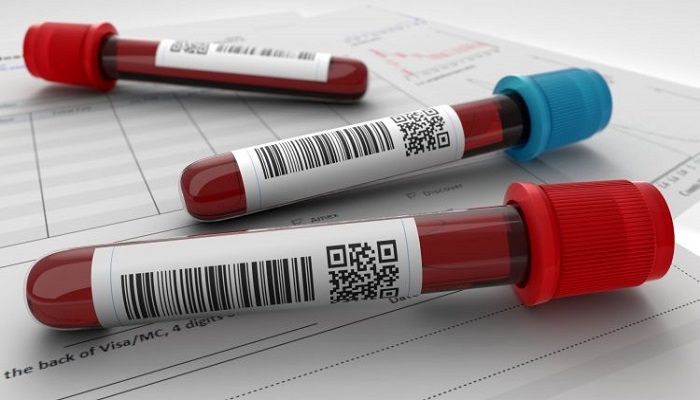Blood Test for Fibromyalgia,Research is ongoing on the Blood Test for Fibromyalgia/a test, which is still relatively new. Insurers might not pay for it, and many doctors haven’t used it yet. Current diagnostic criteria can still be used as confirmation by doctors.
A neurodegenerative disorder called fibromyalgia makes most or all of the body hurt. A disorder affecting the nerve system is called a neurologic ailment.
Between 2 and 4 percent of persons have fibromyalgia. The illness affects more women than men.
Fibromyalgia primary symptoms include:
- Muscle, joint, or skin discomfort or soreness brought on by pressure or touch
- severe fatigue
- sleep difficulties
- memory problems
- foggy thinking
Despite being widespread, fibromyalgia is extremely difficult to diagnose.
In order to rule out other illnesses and medical disorders, the diagnosis process can be time-consuming. For some, this process may potentially take years.
There was no precise diagnostic test for fibromyalgia in the past. Nonetheless, some medical professionals and researchers believe the FM/a test may contain one.
Let’s examine the FM/a test and the current approaches to diagnosing fibromyalgia.
To rule out other disorders, blood testing
Fibromyalgia symptoms frequently resemble those of other illnesses. Your healthcare professional will want to rule out these diseases before considering a fibromyalgia diagnosis.
The following illnesses have symptoms with fibromyalgia:
- Hypothyroidism: Hypothyroidism means having an underactive thyroid.
- Polymyalgia rheumatica: Polymyalgia rheumatica causes aching and stiffness across the whole body.
- Rheumatoid arthritis (RA): RA is an autoimmune inflammatory disease that affects joints and organs.
- Lupus: Lupus is an autoimmune inflammatory disease that affects the kidneys, brain, blood cells, heart, lungs, and sometimes joints.
Blood testing can be used to diagnose or rule out several illnesses.
Your doctor might prescribe the following blood tests to rule out further conditions:
- Complete blood count. This test includes a count of your red blood cells, white blood cells, and platelets. It also tests the amount of hemoglobin in your blood.
- Thyroid hormone tests. These tests measure how well your thyroid is working and can help your healthcare provider diagnose hypothyroidism.
- Antinuclear antibody (ANA) test. This test determines if you have these types of antibodies and can help your healthcare provider diagnose RA.
- C-Reactive protein test. This test looks for a substance the liver produces that’s a marker for inflammation.
- Erythrocyte sedimentation rate test. This test examines how quickly red blood cells settle in the bottom of a test tube. It can help your healthcare provider diagnose polymyalgia rheumatica.
Your healthcare provider will begin considering a potential diagnosis of fibromyalgia if these tests come back negative for these related diseases.
The FM/a test, what about it?
Studies on a potential blood test for fibromyalgia diagnosis have shown promise. We refer to it as an FM/a test.
A tiny sample of your blood is used for the test, which gathers peripheral blood mononuclear cells (PBMC) and plasma. It determines how much cytokine is present in your blood sample.
Cytokine levels that are noticeably reduced could be a sign of fibromyalgia. People with fibromyalgia have been found to have abnormal cytokine levels.
This connection has led researchers to believe that the FM/a test could be a means of more accurately diagnosing fibromyalgia.
What is the conclusion of the research?
Based on current studies, there is potential that the FM/a test could be used to identify fibromyalgia.
Before this test is completely accepted as a fibromyalgia diagnosis tool, more clinical trials must be conducted.
Is it possible to test yourself at home?
To find out if you may have fibromyalgia, there are a few things you may do.
Your healthcare physician will need to know these steps as part of the diagnostic criteria and information before they can properly diagnose you.
Your healthcare practitioner will be better able to decide the next steps in your diagnosis if you have this information before scheduling an appointment.
Here are a few steps to test yourself:
- Keep a pain journal that answers these questions:
- Where does it hurt?
- How long does the pain continue?
- What activities were you doing, if any, prior to the start of the pain?
- How long have you been noticing your pain?
- Has it been present for more than 3 months?
- Check the tender points.
- Keep a sleep journal that tracks how rested you feel when you wake up and throughout the day.
It is advised that you schedule a visit with your healthcare practitioner if you believe you may have fibromyalgia after gathering this information.
You’ll be asked a lot of questions. Your journal will provide you with the knowledge you need to answer such questions.
Currently, how is fibromyalgia diagnosed?
The majority of medical professionals still diagnose fibromyalgia using the conventional criteria.
This diagnostic procedure consists of:
- interviewing you about your specific symptoms and their severity
- checking the number of symptoms you have and the number of body regions that are painful
- ordering blood tests to rule out similar diseases and conditions
- taking X-rays and scans to also rule out other diseases and conditions if indicated
- finding your widespread pain index (WPI) score
The conclusion
Research is ongoing on the FM/a test, which is still relatively new. Some insurance companies might not pay for it, and many healthcare providers might not be using it yet.
Your healthcare professional will probably still utilise the current diagnosis criteria as confirmation even if you have the FM/a test.
Compared to earlier times, primary care physicians are today far better knowledgeable of fibromyalgia and its symptoms.
While the FM/a test undergoes further clinical studies, this familiarity will probably speed up your diagnosis.
Speak with your healthcare physician about getting the FM/a test. You might be able to do that.
Additionally, your doctor might advise you to learn more about the possibility of taking part in a clinical trial for the test.
SOURSE : https://www.healthline.com/health/fibromyalgia/blood-test



